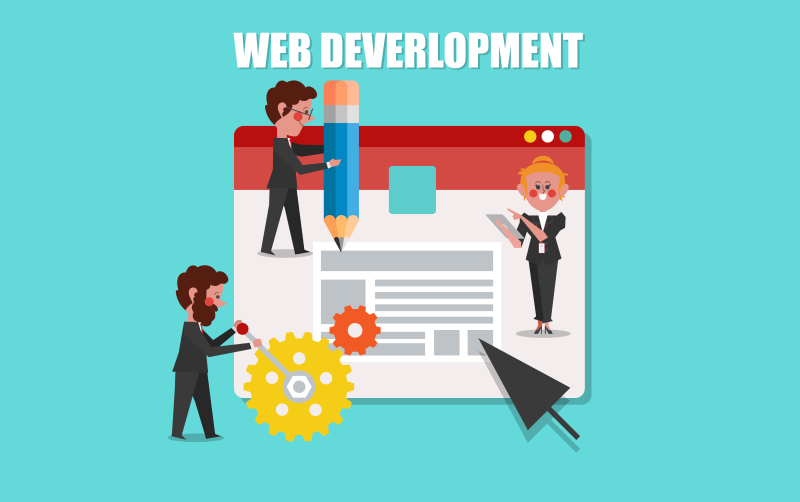Effective Approaches to Building Dedicated Development Teams

1. Articulate Objectives with Precision
Before onboarding a dedicated team, meticulously delineate your project’s aspirations, boundaries, and envisioned deliverables.
Crucial Measures:
- Pinpoint the precise dilemmas your initiative seeks to resolve.
- Devise a robust project blueprint encompassing benchmarks and deliverables.
- Enumerate the requisite proficiencies and technologies essential for the task (e.g., React, Python, CI/CD frameworks).
Why It Matters:
Clarity in scope ensures the alignment of apt talent and minimizes deviations, fostering seamless project execution.
2. Forge Alliances with Reliable Vendors
The role of outsourcing vendors as conduits for global talent reached new heights in recent years. Identifying a dependable partner is paramount to assembling an effective team.
Attributes to Assess in a Vendor:
- Proficiency: Scrutinize their portfolio, testimonials, and case studies.
- Credibility: Examine client endorsements and impartial evaluations on platforms like Clutch.
- Technical Prowess: Verify their expertise in the pertinent tech stack.
- Scalability: Confirm their ability to dynamically adjust team size as needs evolve.
Why It Matters:
An adept vendor minimizes onboarding friction, augments resource quality, and fosters productive synergy.
3. Emphasize Cultural and Communicative Synergy
Harmonious interaction between your internal personnel and the outsourced team hinges on shared cultural touchpoints and unambiguous dialogue.
Best Practices:
- Ensure linguistic fluency in your organization’s operational language.
- Seek congruence in values, ethics, and work methodologies.
- Evaluate the vendor’s communication acumen during preliminary discussions.
- Establish overlapping operational hours for synchronous engagement.
Why It Matters:
Cultural and communicative coherence mitigates friction, bolsters rapport, and enhances collaboration.
4. Architect a Cohesive Team Framework
A meticulously structured team equipped with all necessary roles is the bedrock of project triumph.
Integral Roles to Consider:
- Project Manager: The linchpin facilitating coordination and adherence to objectives.
- Developers: Specialists adept in backend, frontend, or full-stack development.
- UI/UX Designers: Visionaries crafting intuitive interfaces.
- Quality Assurance Analysts: Guardians of software robustness and usability.
- DevOps Experts: Orchestrators of pipelines and infrastructure optimization.
Why It Matters:
Comprehensive role allocation precludes skill gaps and ensures operational efficiency.
5. Adopt Agile Workflows
Agile methodologies empower teams to pivot swiftly amidst evolving requirements while delivering iterative value.
Implementation Blueprint:
- Segment tasks into succinct sprints (1–2 weeks) with tangible outcomes.
- Convene daily stand-ups to address impediments and evaluate progress.
- Leverage tools like Jira, Asana, or Trello for task orchestration.
- Conduct retrospective analyses to refine workflows continually.
Why It Matters:
Agile frameworks enhance responsiveness, transparency, and inter-team collaboration.
6. Establish Robust Communication Ecosystems
Seamless information exchange is the lifeblood of remote teams, underpinning their operational efficacy.
Recommended Tools:
- Instant Messaging: Slack or Microsoft Teams for quick exchanges.
- Video Conferencing: Platforms like Zoom or Google Meet for face-to-face interactions.
- Documentation: Centralized repositories such as Notion or Confluence.
- Code Collaboration: GitHub or GitLab for streamlined version control.
Tips:
- Schedule consistent status updates and strategy sessions.
- Define escalation protocols for addressing critical concerns.
Why It Matters:
Unhindered communication ensures alignment and prevents discrepancies.
7. Streamline the Onboarding Process
A thorough orientation phase equips the team with the requisite understanding of your business ethos and project dynamics.
Onboarding Essentials:
- Provide in-depth documentation covering technical specifics and strategic goals.
- Introduce the team to key stakeholders and internal collaborators.
- Ensure access to vital tools, platforms, and repositories.
- Clarify procedural standards and approval hierarchies.
Why It Matters:
Effective onboarding minimizes ramp-up time and accelerates productivity.
8. Cultivate Enduring Partnerships
While dedicated teams are often hired for finite projects, fostering long-term associations yields compounding advantages.
Strategies for Longevity:
- Treat external teams as intrinsic extensions of your workforce.
- Offer constructive feedback and engage them in strategic deliberations.
- Celebrate milestones and achievements to nurture morale.
Why It Matters:
Sustained collaborations foster trust, loyalty, and continuity.
9. Regularly Assess Performance
Systematic evaluation coupled with actionable feedback ensures continuous improvement.
Key Metrics:
- Velocity of task completion.
- Quality and maintainability of code.
- Resolution timelines for defects.
- Efficacy of collaboration and communication.
Feedback Practices:
- Conduct periodic reviews to highlight successes and growth areas.
- Deliver constructive suggestions and recognize exceptional contributions.
Why It Matters:
Ongoing evaluation drives alignment with objectives and sustains motivation.
10. Opt for Transparent Pricing Models
To mitigate fiscal unpredictability, select pricing frameworks that align with your operational needs.
Common Models:
- Fixed Price: Suitable for clearly defined projects.
- Time and Material: Ideal for evolving requirements.
- Dedicated Team Model: Optimal for enduring partnerships.
Why It Matters:
Clarity in pricing safeguards budgetary discipline and fortifies financial planning.
Final Thoughts
The dedicated development team archetype remains an indispensable asset for businesses, delivering unparalleled access to global expertise, expedited product cycles, and cost-efficiency. By adhering to these strategic principles, organizations can transform their teams into synergistic extensions of their workforce, driving innovation and sustaining competitiveness in the digital frontier.






